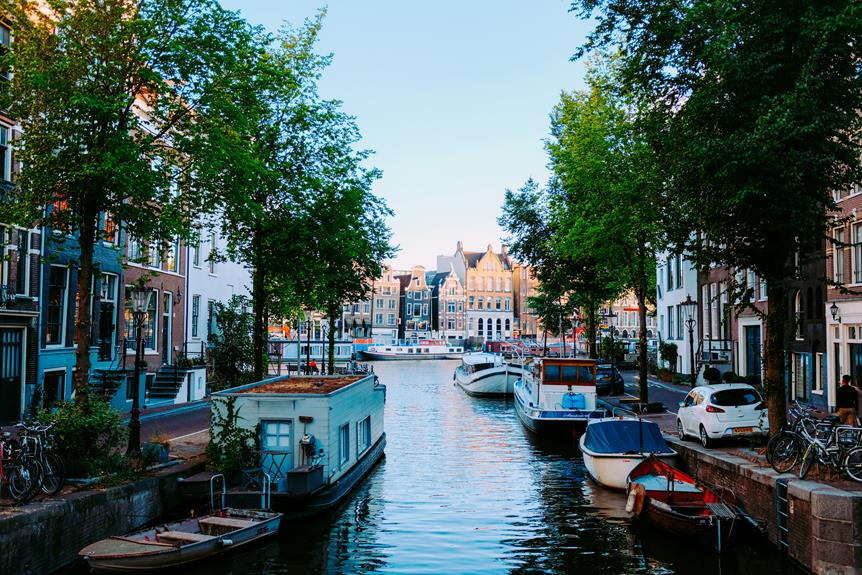Nestled within the scenic landscapes of the Rangpur Division in Bangladesh lies the historic Thakurgaon District, a region that holds a treasure trove of cultural riches waiting to be unveiled. As we step into this captivating district, we are transported back in time to a period filled with dynasties and significant historical events. But Thakurgaon is not just a place of the past; it is a vibrant district that has embraced modern development while still preserving its rich heritage. Join us as we embark on a journey through Thakurgaon, where ancient history meets present-day charm, leaving us with a sense of anticipation and curiosity about the cultural wonders that await us.
Thakurgaon's Rich Historical Background
Thakurgaon district in Bangladesh boasts a rich historical background, characterized by a long lineage of dynasties, significant contributions to the Indian independence movement, and a diverse cultural heritage. The district's archaeological treasures stand as a testament to its ancient rulers, who shaped its history and left behind a legacy that is still revered today. Thakurgaon was once ruled by various dynasties, including the Sena, the Deva, and the Muslim rulers. Each dynasty contributed to the district's cultural and architectural development. The remnants of these dynasties can be seen in the ancient temples and palaces that dot Thakurgaon's landscape. These archaeological treasures not only provide a glimpse into the past but also serve as a reminder of the district's rich historical heritage. Thakurgaon's ancient rulers played a vital role in shaping the region's identity and cultural heritage, making it a must-visit destination for history enthusiasts.
Notable Landmarks and Cultural Sites
With a rich historical background and cultural heritage, Thakurgaon district in Bangladesh is home to a myriad of notable landmarks and cultural sites that showcase its architectural prowess and cultural significance. These landmarks and sites attract tourists from all over the world and contribute to the district's cultural and economic development. Here are three of the most notable landmarks and cultural sites in Thakurgaon:
- Kantanagar Temple: Located in the Dinajpur district, the Kantanagar Temple is an exquisite example of terracotta architecture. Built in the 18th century, this Hindu temple is dedicated to Lord Krishna and showcases intricate carvings and sculptures depicting various mythological scenes.
- Thakurgaon Rajbari: This historical palace, also known as the Thakurgaon Royal Palace, is a symbol of the district's royal past. Constructed during the British era, it features a blend of European and Mughal architectural styles. The palace, with its impressive structure and captivating surroundings, is a popular tourist attraction.
- Shiva Temple in Panchagarh: Situated in the neighboring district of Panchagarh, this ancient Shiva temple is believed to have been built in the 18th century. It is revered by both Hindus and Buddhists and stands as a testament to the religious harmony in the region.
These landmarks and cultural sites not only provide a glimpse into Thakurgaon's rich history but also serve as reminders of the district's cultural diversity and architectural brilliance.
The Economy and Development of Thakurgaon
The economic landscape of Thakurgaon district has undergone significant transformations, propelling its development and shaping its future trajectory. Efforts are being made to promote sustainable tourism in the district, capitalizing on its rich cultural heritage and scenic beauty. The development of infrastructure and communication has played a vital role in attracting tourists to Thakurgaon's historical landmarks and natural landscapes. Additionally, there has been a focus on enhancing agricultural practices in the district. Thakurgaon is known for its agricultural productivity, with crops such as rice, wheat, sugarcane, seasonal vegetables, and fruits being cultivated. Initiatives such as the establishment of the Thakurgaon Sugar Mill and the promotion of poultry farming and cold-stores have further contributed to the economic growth of the district. Furthermore, Thakurgaon is witnessing the growth of industries such as textiles and garments, creating employment opportunities and boosting the overall development of the district.
Changing Demographics and Ethnic Communities
The demographic composition of Thakurgaon district has experienced significant shifts over time, reflecting the dynamic cultural landscape and the presence of diverse ethnic communities. These changes have played a crucial role in shaping the social fabric of the district. Here are three key aspects related to changing demographics and ethnic communities in Thakurgaon:
- Integration of ethnic communities: Thakurgaon is home to various ethnic communities, including Bengalis and Santals. Efforts have been made to promote the integration of these communities, fostering a sense of unity and harmony among them. Social and cultural programs are organized to encourage interaction, mutual understanding, and respect among different ethnic groups.
- Minimizing cultural conflicts: With the presence of diverse ethnic communities, it is essential to minimize cultural conflicts and promote cultural diversity. The district administration and community organizations actively work towards creating an inclusive environment where different cultural practices and traditions are respected and celebrated.
- Preservation of cultural heritage: Thakurgaon's cultural heritage is reflected in its historical sites, temples, and traditional practices. Efforts are being made to preserve and promote this rich heritage, ensuring that future generations have a deep appreciation for their cultural roots. Cultural festivals and events are organized to showcase the traditions and customs of different ethnic communities, contributing to the overall cultural richness of Thakurgaon district.
Preserving Thakurgaon's Cultural Heritage
Having explored the changing demographics and ethnic communities in Thakurgaon district, the focus now shifts towards the imperative task of preserving Thakurgaon's cultural heritage. Cultural preservation is of utmost importance as it not only helps maintain the identity and traditions of a community but also fosters a sense of pride and belonging among its members. However, the impact of modernization poses a significant challenge to the preservation of cultural heritage. The rapid development and globalization have led to the erosion of traditional practices and values. To illustrate this, consider the following table:
| Importance of Cultural Preservation | Impact of Modernization on Cultural Heritage |
|---|---|
| Maintains cultural identity | Erosion of traditional practices |
| Preserves historical knowledge | Loss of traditional values |
| Fosters a sense of belonging | Introduction of foreign influences |
Efforts must be made to strike a balance between modernization and cultural preservation, ensuring that the unique heritage of Thakurgaon is safeguarded for future generations.
Frequently Asked Questions
What Is the Main Agricultural Crop Produced in Thakurgaon?
The main agricultural crop produced in Thakurgaon district is rice. Known as the "staple food of Bangladesh," rice cultivation plays a critical role in the district's economy and sustenance. Thakurgaon's fertile land and favorable climatic conditions make it ideal for rice cultivation. The district's farmers employ traditional methods as well as modern techniques to ensure a bountiful harvest. The production and distribution of rice contribute significantly to the overall agricultural landscape and food security of Thakurgaon district.
How Many Square Kilometers Does Thakurgaon Cover?
Thakurgaon District covers an area of 1,781.74 square kilometers. This district in Bangladesh is not only known for its agricultural productivity but also for its rich cultural heritage and tourism potential. With its historical sites, temples, and traditional practices, Thakurgaon showcases a vibrant cultural heritage that attracts visitors. Efforts are being made to promote tourism and develop infrastructure to further unlock the district's cultural riches and maximize its tourism potential.
What Is the Literacy Rate in Thakurgaon?
The literacy rate in Thakurgaon is 74.3%. This statistic highlights the importance of education in the district and reflects the efforts made to promote literacy among the population. The education system plays a crucial role in shaping the future of Thakurgaon by equipping individuals with the necessary skills and knowledge for personal and professional growth. With a literacy rate of 74.3%, Thakurgaon is making significant strides in improving education and empowering its residents with the tools for a better future.
Which Industries Are Experiencing Growth in Thakurgaon?
The industries experiencing growth in Thakurgaon include textiles and garments, alongside the agricultural sector that plays a significant role in the local economy. Efforts are being made to promote tourism development and there has been substantial development in infrastructure expansion and communication. These developments have created opportunities for the growth of various industries, attracting investments and fostering economic development in Thakurgaon. The district's strategic location and natural beauty make it a potential hub for industrial and tourism growth in the region.
What Is the Current Religious Demographic in Thakurgaon?
The current religious demographic in Thakurgaon reflects a harmonious coexistence among different religious communities. Muslims constitute 76.70% of the population, followed by Hindus at 22.26% and Christians at 0.57%. This diverse religious composition is a testament to the cultural richness and religious tolerance of Thakurgaon. The district celebrates various religious festivals with great enthusiasm, including Eid-ul-Fitr, Durga Puja, and Christmas. These festivities exemplify the unity and inclusivity prevalent in Thakurgaon's society.





